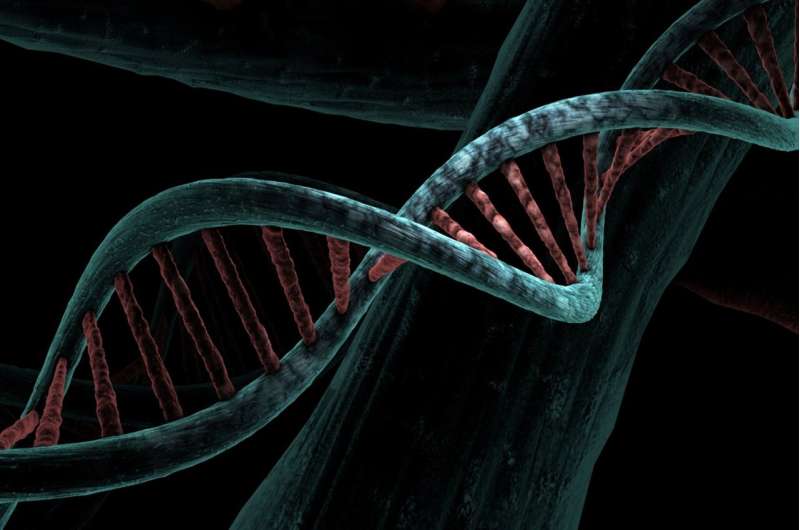Credit: Pixabay/CC0 Public Domain
A team led by researchers at Baylor College of Medicine has discovered a mechanism by which transcription factor KLF4 can help to organize chromatin, thus influencing gene expression.
The study, published in the journal Nature Communications, reveals that the binding of KLF4 can cause DNA to condense into a separate liquid phase in a process called biomolecular condensation, which recruits other factors that influence gene expression.
"Cells regulate the expression of their genes with proteins called transcription factors," said co-corresponding author Dr. Josephine C. Ferreon, assistant professor of pharmacology and chemical biology and member of the Dan L Duncan Comprehensive Cancer Center at Baylor. "In the current study, we focused on master transcription factor KLF4, which is known to selectively mediate gene expression and reprogramming that determines cell fate."
A cell's genetic information is packed in chromatin, a complex, compact, dense structure made of DNA and proteins. Expressing a particular gene requires that the gene expression molecular machinery has access to that stretch of DNA. Transcription factors such as KLF4 are involved in reorganizing the chromatin to provide access and facilitate gene transcription, but it is not clear how this is accomplished.
By conducting experiments with cells grown in the lab, the researchers discovered that KLF4 forms droplets in the cell nucleus that recruit other transcription factors.
"Imagine mixing oil and water, how they form separate layers, or two liquid phases," Ferreon said. "When KLF4 interacts with specific chromatin regions, it forms a condensate—a separate liquid phase—that preferentially recruits other molecules that help open the chromatin and mediate gene transcription."
Other transcription factors participate in biomolecular condensation through unstructured protein regions, but the researchers showed that KLF4 droplets form in cells even if its unstructured regions are not present. Instead, KLF4 droplet formation depends on regions called zinc fingers, which are known to bind DNA. Single molecule fluorescence experiments show that the three KLF4 zinc fingers, which usually bind in a row to one DNA, can 'bridge' between two DNA molecules.
"This type of biomolecular condensation involving zinc fingers and DNA has not been seen before," Ferreon said.
"Formation of this biomolecular condensate is strongly enhanced by a DNA modification called CpG methylation, a change that influences gene expression," said co-corresponding author Dr. Kevin MacKenzie, associate professor of pathology and immunology and of pharmacology and chemical biology at Baylor. "Our results suggest that the local sequence of DNA and its CpG methylation state enable KLF4 to drive DNA into a separate phase, which helps to organize chromatin in three dimensions."
"Hundreds of human transcription factors contain tandem zinc fingers like those in KLF4, so this class of rapidly evolving proteins may be implicated in chromatin organization through similar 'bridging' interactions," said MacKenzie.
More information: Rajesh Sharma et al, Liquid condensation of reprogramming factor KLF4 with DNA provides a mechanism for chromatin organization, Nature Communications (2021). DOI: 10.1038/s41467-021-25761-7
Journal information: Nature Communications
Provided by Baylor College of Medicine
























